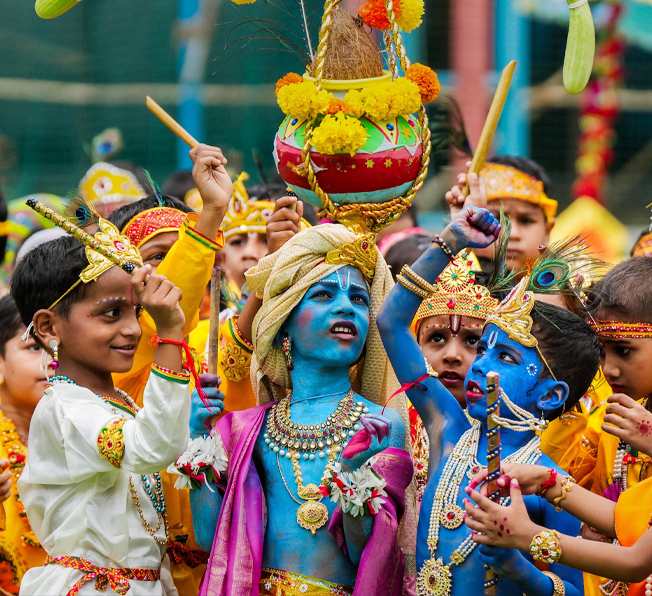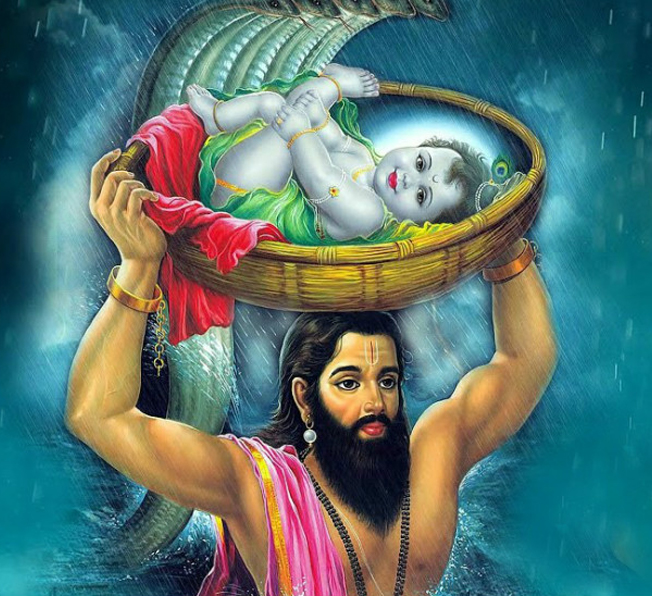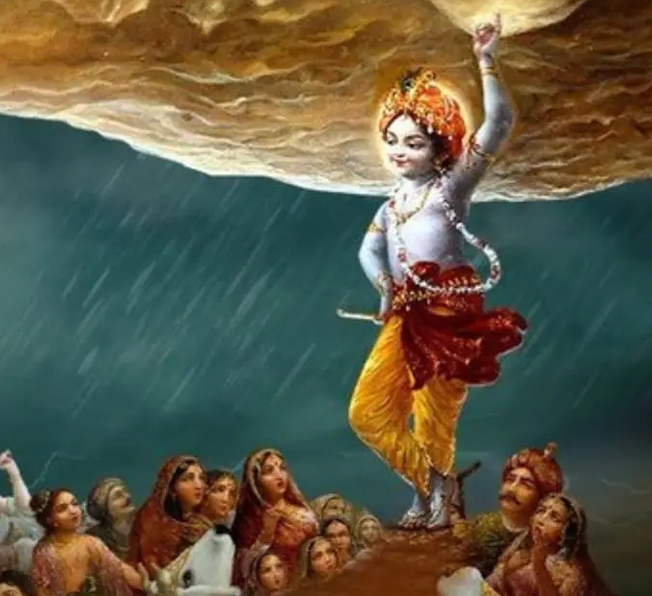Famous Festivals


Dahi Handi in Vrindavan
‘Dahi Handi’ or ‘Reaching the Yogurt Pot’ is an interesting enactment of how the wily Krishna would get at the most inaccessible of places to satiate his own and his friend’s yearning for fresh butter churned by gopis. This festival comprising the youth of a locality getting together and forming a pyramid by standing on each other’s shoulders and steadily climbing up to great heights to reach a pot of butter or dahi hung up precariously at some very high point. This takes on the form of competitions with the prize booty going up to hundreds of rupees and gifts and lavish feasts for the winners. Therefore, to make the going tougher the competing teams pour water on the backs of the boys standing at the bottom of the pyramid and even shout out all kinds of inducements to the boys climbing up so that they are distracted and tend to fall down. However, the team that reaches the prize and breaks the pot with a coconut placed on top of the pot succeeds in winning and is celebrated by the entire community.Dhi Handi celebrations commemorate Lord Krishna's childhood. The legend goes that Bal Krishna was a mischievous kid fond of curd (dahi) and butter (makhan).
Holi in Vrindavan
The festivals of Vrindavan are unique, colorful events almost always involving ‘Raas’ or singing and dancing, the throwing of colors and eating several sweetmeats. The grandest festival, however, is the Holi festival or the festival of colors that virtually provokes everybody to lose all inhibitions and immerse themselves in the multifarious presence of the Lord. The significance of Holi is such that in some temples colored water is sprayed continuously all the year around and that too with a fervor matched with the devout passion of the devotees. One of the best places to see the enact of ‘gokul’s’ holi celebration is at the Gulal Kund of Braj. Here the young boys and girls form into troupes and dance the ‘Raas’ throughout the day and night regaling the audiences with the episodes from the life of the young Krishna depicting him as a mischievous and naughty yet very friendly and loving person. At the lake near the Govardhan hillock the waters are fragrant with the perfumed colors or ‘gulaal’. The ideology behind the colorful festival is the substance of Krishna’s love tales.


Krishna Janamashtami in Vrindavan
The birth of Lord Krishna or his ‘Janamashtami’ is celebrated with the greatest fanfare and aplomb in Vrindavan. A number of rituals are associated with his birth and are enacted through ‘Raas Lila’ at various sites. People dress up their children as little ‘Gopals’ and seek the blessings of the Lord. In almost all the temples the decoration and the festivities are planned several days in advance. The silver, brass and ornate cradles are hung in the foreground of the worshipping areas in preparation of the coming of the Lord. Devotees fast and spend the day and night singing hymns in praise of Lord Krishna and his mystique. At the stroke of midnight there are a number of rituals including the bathing of the Lord in milk and then it is believed that Krishna had appeared in the cradle at Vrindavan after his father, Vasudev had carried him to the home of his brother, Nand after crossing a turbulent Yamuna. Legend has it that it always rains on Janamashtami day and that is when the devotees all bathe in the sweet showers that fall from the skies like the blessings of the Lord himself. It is considered auspicious to rock the decorated cradle of infant Krishna.
Hariyali Teej in Vrindavan
The festival of Haryali Teej is another festival peculiar to Vrindavan. This festival marks the end of the hot summer and is the point where the soft rains are welcomed. It is a time when the earth takes on a green hue after the long parched months. As the showers begin to fall regularly towards the middle of this ‘sharavan’ month it is nearer the amavasya of sharavan that the Lord’s resplendent swing is setup outside the Jagmohan of the Banke Bihari Temple. The Lord with his consort moves out to the beautifully ornate swing that defies description at the very least. There he is seen by this deliriously ecstatic devotees in hues of green garments that make him almost one with nature and on that day the Prasad comprises ‘ghevar’ and ‘pheyni’ both of which are sweetened rice and milk preparations. The festival is marked with all sorts of interesting and involving outdoor activities for both the men and women. While the women contend themselves with swinging leisurely on the swings that have been strung up on almost every tree of the region, the men have more rigorous pastimes. They tend to indulge in wrestling matches and various competitions of physical prowess.


Radha Ashtami Vrindavan
Radha Ashtami is the birthday of Lord Krishna’s playmate and heartthrob Radha. Vrindavan celebrates this day with about as much gaiety and pomp as it does the birthday of the Lord himself. Interestingly, it is also the birthday of Swami Haridas. He had composed a number of compositions on Radha and on the days following Radha Ashtami the Nidhivan is ceremoniously decorated and the Raas Lila troupes from all around participate in a non-stop delightful festival of reliving the life of the Lord and his beloved Radhey. One of the wonderful aspects of this day is the ‘chav’ or procession taken out from the Bankae Bihari Temple to the Nidhivan which is accompanied by a number of bands and all sorts of performing artistes who dance and sing along the entire pathway to commemorate the birth of the beautiful Radha as also to commemorate the even when Swami Haridas had found the image of Banke Bihari in Nidhivan. Radha Ashtami is also marked by a number of cultural festivals that re virtual feasts to those who appreciate classical music and dance performances. The renditions continue to the wee hours of the mornings at the ‘Samadhi sthal’ at Nidhivan.
Govardhan Puja Vrindavan
Another one of these are Govardhan Puja, when he had lifted the massive Govardhan Parwat or mountain on his little finger and protected the entire clans and animals of Gokul under its protective umbrella from the rabid onslaught of the stormy weather. When the elders of Krishna’s village under his persuasion begin worshipping the ‘Goverdhan parvat’ rather than Indra for rains, Krishna himself attained a huge form as the ‘Giriraj’ and accepted all their offerings. This festival is also called Annakoot. The festival is marked with all sorts of interesting and involving outdoor activities for both the men and women. While the women contend themselves with swinging leisurely on the swings that have been strung up on almost every tree of the region, the men have more rigorous pastimes. They tend to indulge in wrestling matches and various competitions of physical prowess. Govardhan Puja commemorates the battle between Lord Krishna and the rain god Indra. As per Hindu mythology, God Indra was annoyed with the devotion of people towards Lord Krishna. The enraged god caused humongous destruction with copious rain





